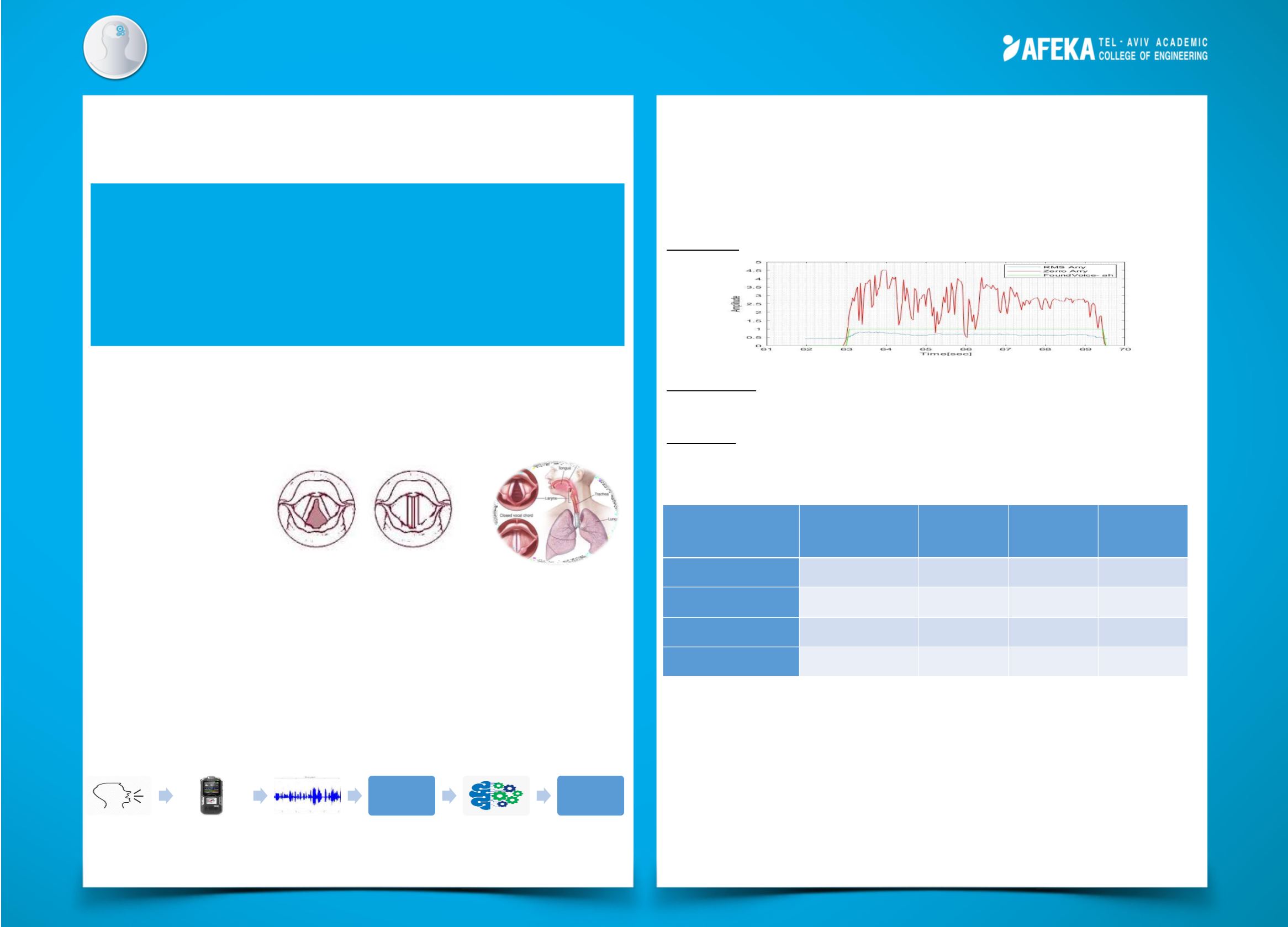

Diagnostic System for vocal folds Diseases
Motivation- The Problem
Voice pathologies can interfere with voice quality, speech tone, and tone of voice.
In Israel, about one million people are diagnosed with voice pathologies (12% of
the population). These pathologies reduce the quality of life and significantly
affect society and the economy. Existing technologies offer certain benefits, but
they often lead to late/incorrect diagnoses that delay the treatment required for
the patient.
Main goal
The main goal is to characterize the changes in voice and build a classification
algorithm to identify the vocal pathologies. The purpose of this system will be
classifying diseases in a non-invasive method, additionally backing up the
doctor's diagnosis.
The Method
Creating a computerized learning machine system, able to receive vocal records,
and diagnosing vocal pathologies based on those signals.
Michal Wasserman, Nofar Torem
Advisor: Yirmi Hauptman
Medical Engineering
Data Collection
Building a database based on '.wav' files of patients with various pathologies of
the vocal cords, who were treated by a communication clinician from 'Hadassah
Medical Center’.
The Algorithm
First step: Extracting from the '.wav' files the sequence of 'ah' vowel.
Second step:
Developing an algorithm for data analysis of speech signals. The algorithm
includes features extraction from the time and frequency domain analysis.
Third step:
Finding the best kind of classifier based on the features that were extracted by
subjective and objective model.
Results
Discussion & conclusions:
In this work, existing techniques of feature extraction such as LPC, ZRC, RMS,
HNR, shimmer, jitter, and entropy are implemented in order to classify
pathologies of the vocal tract.
Pathologies classification based on a dataset constructed from speech signals
recorder from different subjects is challenging since certain vocal features are
speaker-dependent, which inevitably affects the results obtained. Notwithstanding
the above, it can be seen that the classifier's results in this study were relatively
good since it has an identification percentage of over 70%. It can be seen that the
higher success [%] was obtained for the logistic regression classifier (73%).
An algorithm that is a reliable and automatic detector
for speech pathologies from speech signals. The
algorithm combines different vocal features and uses
machine learning classifier in order to get the correct
identification. Its noninvasive, fast, and early
detection of voice pathology for professionals.
Classifier type Success percentage
[%]
Sensitivity [%] Specificity [%] Accuracy [%]
Linear SVM
71%
67
%
71
%
70%
5Logistic regression
73%
71
%
72
%
72%
Cubic KNN
71%
70
%
72
%
72%
Weighted KNN
71%
70
%
72
%
72%
Data Analysis
Healthy /with
Pathology
















